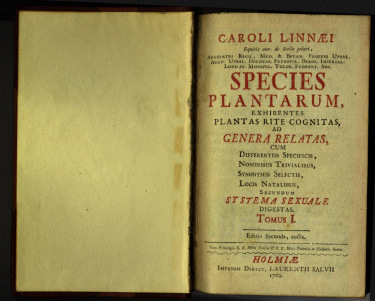

Tobacco is related to garden
vegetables, flowers, weeds, and poisonous herbs such as potatoes,
tomatoes, eggplant, petunias, jimson wood, ground cherries, and
nightshade. The family of plants is Solanaceae; the genus
Nicotiana contains about 100 species, only two of which have been
extensively cultivated. Nicotiana tabacam is used in cigarettes
and tobacco and is the predominant type of crop tobacco. 
Originally, Native Americans in the eastern United States grew Nicotiana rustica, which was the first form of tobacco introduced in England and Portugal. N. Tabacam, first introduced to the Spanish, was obtained from Mexico and South America. It has been the preferred tobacco since settlers in Jamestown, Virginia, began growing it.
 Because planters believed that tobacco had to be grown on virgin
soil, tobacco gradually made its way to the eastern part of what
is now North Carolina. Consumer preferences for tobacco products
changed decidedly from the early 1700's.
Because planters believed that tobacco had to be grown on virgin
soil, tobacco gradually made its way to the eastern part of what
is now North Carolina. Consumer preferences for tobacco products
changed decidedly from the early 1700's.
Carl Linnaeus describes tobacco in this 1762 edition of Caroli Linnaei Species plantarum, exhibentes plantas rite cognitas, ad general relatas, cum differentiis specificis, nominibus trivialibus, synonymis selectis, locis natalibus, secundum system a sexuale digestas.
In 1839, bright leaf tobacco was discovered by a slave named Stephen (headman on the farm of Abisha Slade, a successful planter in Caswell County). Stephen fell asleep owing to the heat from the wood fires in the tobacco barn, and when he awoke the fire was almost out. He rushed to a charcoal pit and found some charred logs on the dying embers. He threw these on the fire, which created a sudden drying heat, which resulted in the brightest yellow tobacco ever seen.
The eighteenth century became the
"Age of Snuff." Tobacco from North Carolina  was used for snuff and pipe smoking,
because the cigarette was not widely known outside of Spain. By
the 1840's cigarettes had become popular with French women. Much
to the chagrin of anti-tobacco societies, cigarettes caught on in
the United States as well. Dr. Russell Thacher Trall, an anti-
tobacco campaigner, said:
was used for snuff and pipe smoking,
because the cigarette was not widely known outside of Spain. By
the 1840's cigarettes had become popular with French women. Much
to the chagrin of anti-tobacco societies, cigarettes caught on in
the United States as well. Dr. Russell Thacher Trall, an anti-
tobacco campaigner, said:
Some of the ladies of this refined and fashion-forming metropolis [New York] are aping the silly ways of some pseudo-accomplished foreigners, in smoking Tobacco through a weaker and more feminine article, which has been most delicately denominated cigarette. Despite such opposition to tobacco, the twentieth century saw a rise in its use.
 Consumer demand established tobacco farming as an important
Consumer demand established tobacco farming as an important  part of North Carolina farm life. NC State, through its College
of Agriculture and the Agricultural Extension program, researched
tobacco and aided farmers around the world. Farmers received important
information from NC State. Blue mold probably existed in the
western United States for many years as a minor disease on wild
species of tobacco. It came east in 1921 but disappeared for ten
years before resurfacing in 1931. It is caused by a fungus that
attacks tobacco.
part of North Carolina farm life. NC State, through its College
of Agriculture and the Agricultural Extension program, researched
tobacco and aided farmers around the world. Farmers received important
information from NC State. Blue mold probably existed in the
western United States for many years as a minor disease on wild
species of tobacco. It came east in 1921 but disappeared for ten
years before resurfacing in 1931. It is caused by a fungus that
attacks tobacco.
| Types of Tobacco: Fire-cured tobaccos, used for snuff and chewing tobacco, grown in central Virginia, western Kentucky, and northwestern Tennessee Dark air-cured tobaccos, used for chewing tobacco, grown in central Kentucky, central Tennessee, and north-central Virginia Maryland tobaccos (air-cured) used for cigarette and smoking mixtures, grown in southern Maryland Cigar tobaccos (air-cured) used for cigar wrappers and fillers, grown in the Connecticut Valley and small areas of Florida, Wisconsin, Pennsylvania, and Ohio Flue-cured tobaccos, used for cigarette, pipe, and chewing tobacco, grown in southern Virginia, central and eastern North Carolina, eastern South Carolina, southern Georgia, southeastern Alabama, and northern Florida Burley tobacco (air-cured) used for cigarette, pipe, and chewing tobacco, grown in central Kentucky, central and eastern Tennessee, southeastern Indiana, southern Ohio, western West Virginia, and western North Carolina |
Faculty such as Professor R. R. Bennett traveled extensively to study foreign tobacco. In 1957 he took a trip to Africa, India, and Australia, which indicates the extent that cultivation of tobacco has spread.
Advertisements for cigarettes appeared in various campus publications such as State College News, The Wolfpack Gridiron, The Wataugan, football programs, and the Technician. From the University Archives .